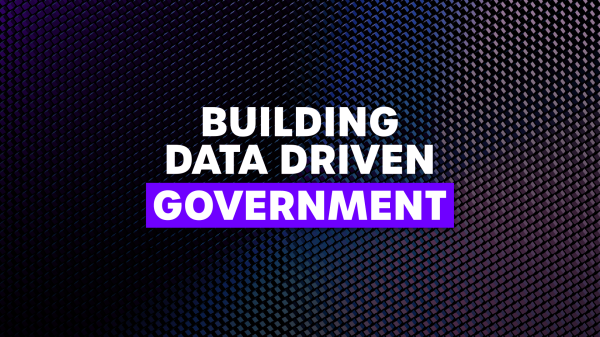- Sponsored
- Workforce
Enabling an anywhere workforce in government

Public sector agencies are not known for their flexibility when it comes to when, where, and how employees work. The demands that come with their missions often dictate where members of their workforce need to be located as well as the IT systems they have to use. But when the COVID-19 pandemic sent Americans across the country into quarantine, public sector technology leaders were forced to deal with a massive culture change — the anywhere workforce.
By March 22, 2020, Ohio became the sixth state to declare a coronavirus lockdown. It had only been two weeks since a state of emergency had been declared. And in that time, the state’s Chief Information Officer (CIO), Ervan Rodgers, needed to shift tens of thousands of employees to remote work.
“In two weeks, we got roughly anywhere from 30,000 to 55,000 people in a work-from-home status. That’s lightning speed,” Rodgers said, speaking at the 2021 Public Sector Innovation Summit sponsored by VMware. Rodgers left his CIO post in June to take a role in the private sector, but shared the lessons he learned through that period. (Watch the full panel discussion here.)
While the pandemic would prove to be disruptive for millions of Americans, there was a silver lining in how it forced many public sector agencies to rethink how to accomplish their missions. Telework, as it was once known, no longer accurately described what was happening to the nature of work — or conveys an accurate picture of the technology landscape that is revolutionizing what it means to work in the public sector.
“State government has not necessarily been an environment where we’ve worked from home. It’s kind of frowned upon,” Rodgers said. “However, I think the pandemic not only ignited innovation, but it’s also given us an ability to prove that we’re, in some cases, much more productive.”
Government workers in Ohio weren’t alone. At the U.S. Census Bureau in Washington, D.C., — an agency perhaps best-known for its paper forms and army of pencil-toting census takers — Deputy CIO Dr. Gregg Bailey sent more than 15,000 employees home in the middle of the decennial population count.
In a weird sort of way, the changes brought about by the pandemic were “really good timing for us from a technology standpoint,” Bailey said. The bureau had been racing against the clock to overhaul its IT operations to make the 2020 census the first to be conducted primarily online.
“Because we were beginning the census, we had expanded our bandwidth dramatically. And ironically, the day we went to 15,000 teleworkers was the highest day for the self-report, internet census. “We had a huge number, over 100,000 concurrent respondents filling out the census, at the same time we had 15,000 new employees teleworking.”
Cultural implications: It’s different this time
For Bailey, it’s important for agencies to make a distinction between teleworking of the past and what is taking place post-pandemic. It goes “beyond telework” to “work from anywhere,” he said, and the new normal has significant implications for culture and security.
“We have the ability to go anywhere from a technical standpoint, and now it becomes an issue of policy,” Bailey said. “We’re working with the union and we’re working with the employees and the leadership to see what that is going to look like.”
Cameron Chehreh, Chief Technology Officer and Vice President of Pre-Sales, Engineering at Dell Technologies Federal, said whatever the anywhere workforce looks like will entail a “rethinking of work” for the public sector.
“There’s no water cooler to gather around anymore,” he said. “So how do I actually take teams of people that were used to working in an office and make them productive, in that work from anywhere situation, and make sure that we’re getting work completed, and that the mission of government and continuity is continuing to occur?”
Part of the answer is leveraging new technologies, like Virtual Desktop Infrastructure (VDI) and cloud computing, Chehreh said.
The other part of the answer, and perhaps the most important part, is culture — and ensuring employees feel connected. It’s not always as easy as it sounds, but sometimes the solutions are right in front of us.
“We found things as simple as turning the [web] camera on has been a really important solution,” said Bailey. “We were finding there were people being hired during the pandemic who wouldn’t turn their camera on. And so they literally had never met their boss visually,” he said. “Although we’re not demanding the use of cameras, we’re trying to encourage their use.”
Rodgers acknowledged that tools like Microsoft Teams and VMware have enabled public sector agencies to reshape the workplace. “It’s the future of the workplace, where you’re going to have some folks that are working from home, some folks that are in the office, and they might switch schedules,” he said. “There are folks who are reimagining the workplace, things are only going to get more exciting from a cultural perspective.”
For Chehreh, the cultural shift looks more profound this time around.
“Never forget or underestimate the power of culture,” he said. “And you have to make sure people continue to connect. If you don’t have that team environment, then you don’t have people that will run through walls for you to be able to get things done. But we can safely and securely innovate. And there’s a level of excellence in this country I haven’t seen in a long time. And it’s the pandemic that brought out the best of us.”
Learn more about “Enabling an Anywhere Workforce” and how VMware is helping to accelerate public sector innovation.






